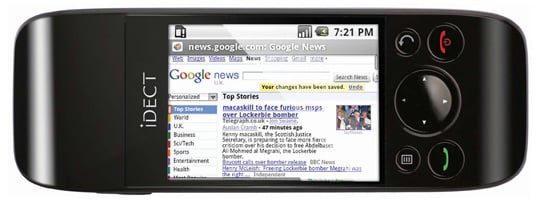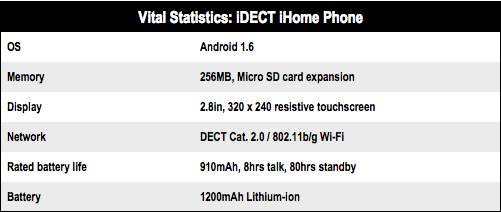This article is more than 1 year old
iDect iHome Android phone
The household handset meets the 21st century
Without a USB connection, installing new apps onto the iHome is a trial-and-error process of finding APKs and then loading them onto a MicroSD card. Yet with only 50MB of storage available after system requirements, you won’t be installing many. To make managing applications and files a little easier, both task and file manager apps come pre-installed.

Web browsing, but no Skype
A 2.8in 320 x 240 screen may sound a bit low-rent when compared to even a budget smartphone but that is to miss the point – it’s still a massive improvement on the 1.5 to 2in mono LCD displays that many digital home phones reply upon. Being a resistive panel there is little danger of you mistaking the iHome’s touchscreen interface for that of an HTC or Samsung Android handset, a situation exacerbated by the underlying UI being neither particularly fast nor fluid.
That said finger presses on even the rather small standard Android keyboard registered accurately nine times out of ten and the phone dialler works a treat. If you do have problems with the fiddly stuff you can always whip out the small plastic stylus.
iDect has burdened the iHome with the now seriously outdated v1.6 of Android which, of course, means no Skype and though Fring loaded and launched, call quality was abysmally fragmented, presumably in part down to the unlabelled but doubtless limp-as-wet-lettuce CPU. A phone with Wi-Fi but no common-or-garden VoIP facility strikes me as a missed opportunity.
Running Android also has a practical drawback; the start-up time when the handset is turned off. Most DECT phones come alive nearly instantly, but the iHome takes a leisurely two minutes, so you really need to leave it switched on if you don’t want to miss incoming calls.

